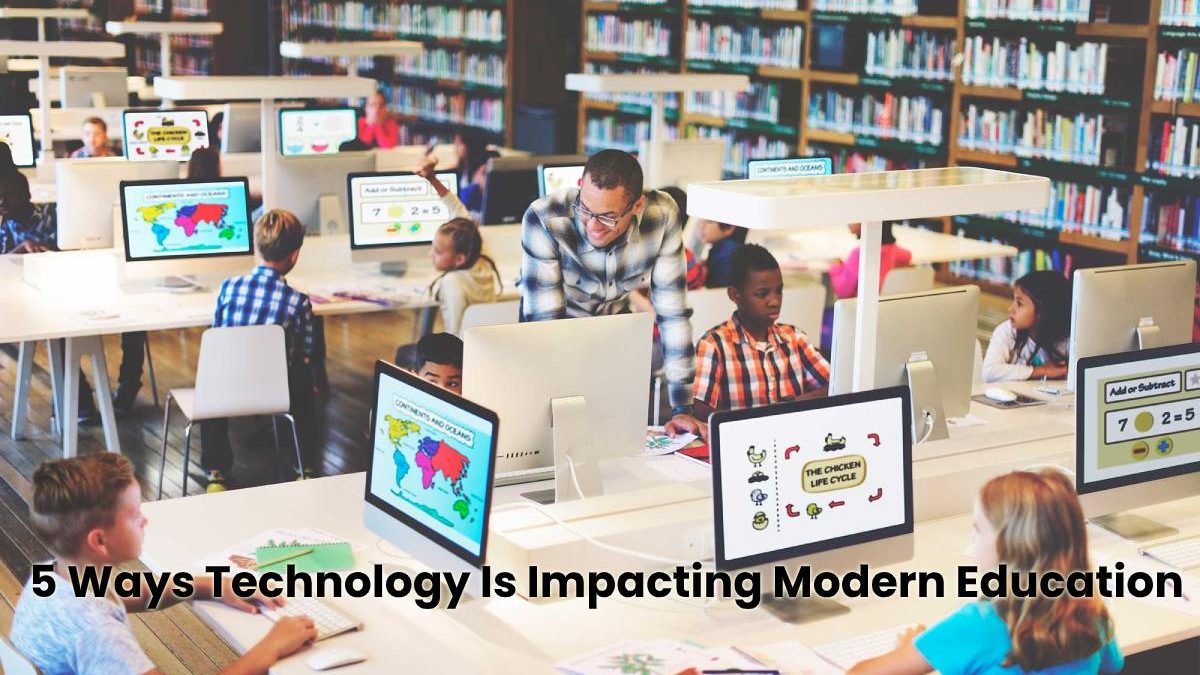Technology Impacting on Modern Education: The exponential progress in communications, information technology, and computer technology continues to change society. A number of important successes have been achieved in the field of education.
At present, the role of information and social technologies in education is increasing, which ensures the universal computerization of students and teachers at a level that allows them to solve basic problems.
Students have the opportunity now to easily order a paper in the assignment writing service WriteMyEssayOnline and do not worry about writing it. Technology has seriously affected education, and this is evident in a number of manifestations.
Table of Contents
#1. Development of Distance Learning
Using the latest technology, universities can go beyond the campus and reach students of all age, academic or social categories in different countries of the world. The process begins with the introduction of multi-level online learning, it provides flexibility and affordability.
This, in turn, will allow students to master shorter university curricula before embarking on higher education. Technological formats, such as training courses optimized for mobile devices, allow the student to gain knowledge where he/she is.
Thus, it is easier for a young person to adapt to a new learning environment or to resume training after a long break. A more advanced level is when universities use adaptive methods based on artificial intelligence to personalize education for millions of people and improve their quality.
#2. Online Programs
Universities are already seeing online higher education programs deliver good results. Top MBA programs, such as the Macquarie University Master of Business Administration program, University of Illinois (Urbana-Champaign) iMBA program, Kelley Online Business School MBA and Carnegie Mellon University Online Business School MBA already include online training, more accessible to working professionals.
These programs also offer multi-level training – for example, a small set of online courses that allow students to fill in certain competency gaps or add specific skills that are useful in their careers.
#3. Improving Accessibility
Using technology in all its diversity, universities can change the lives of millions of people around the world, giving them access to education. But this is not the only reward.
Thanks to deeper interaction and local industry partnerships, world-famous prestigious higher education institutions will be able to effectively promote research and find solutions to the most pressing problems of our time.
#4. Cooperation among Universities
The global challenge is to increase the accessibility of higher education worldwide. Universities can be the epicenter of educational reform. Using technology, they can join forces and create a common learning ecosystem, as well as complement their own programs with the best courses from other educational institutions.
Last year, the Monterrey University of Technology of Mexico, Andean University of Colombia, and the Pontifical Catholic University of Chile teamed up La Tríada, the first of its kind joint projects in which 150,000 university students get access to 100 online courses.
The benefits are not limited to a single curriculum. Universities can also come together to launch a common credit and grading system, as well as create virtual co-educational spaces or collect ideas from a wide audience, what needs to be changed in existing courses and what programs are missing.
#5. Exchange of Teachers
Technology cooperation will also help reduce the shortage of teachers around the world. This year, Inside Higher Ed media company, reported a shortage of computer science teachers in the United States.
In India, the lack of academic staff is holding back the development of the best educational institutions: for example, in the leading technological educational institution, the Indian Institute of Technology, the teacher shortage is 35%. Digital ecosystems make it easy to connect experts on the topic of interest from the scientific or business community to offer students from anywhere in the world individualized study programs.
Other opportunities: universities will be able to appeal to the best minds from the business sector or conduct an online exchange of teachers with other universities. Technology ecosystems are also accelerating university research.
For example, Quartolio’s artificial intelligence-based research platform helps researchers from various universities, including Berkeley, the Massachusetts Institute of Technology (MIT) and Stanford, complete the picture and make scientific discoveries at the junction of different scientific disciplines.
In Summary
A promising education system should take into account the main challenges of the 21st century and the most important human problems associated with them in the modern and upcoming information society.
The most important directions of the transition to a new educational concept, which will become the basis for a prospective education system necessary for the conditions of the 21st century.
Include, in particular, the fundamentalization of education at all its levels; implementation of the concept of advanced education; widespread use of innovative and developing education methods based on the use of advanced information technologies.
Increasing the availability of quality education through the development of distance learning systems and means of information support of the educational process with modern information and telecommunications technologies. Technology has already significantly affected education and then influence will become even more evident.

